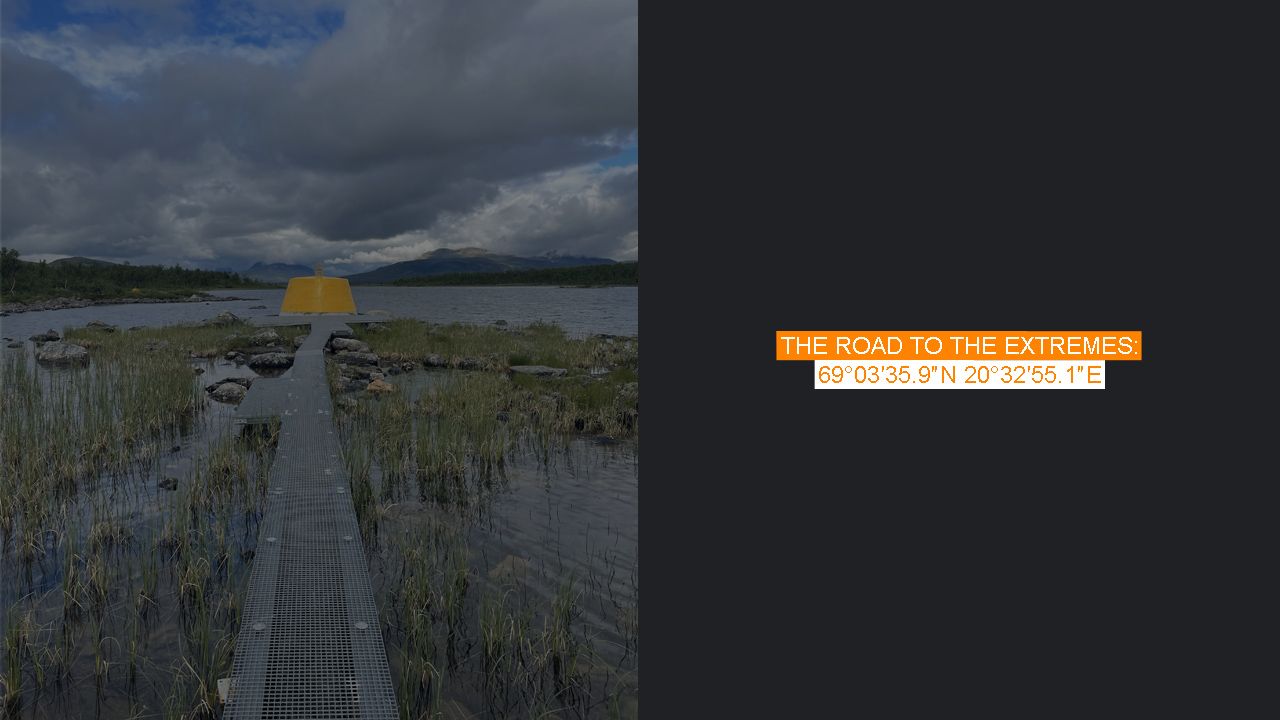And also the westernmost point of mainland Finland
Finland’s shape, often referred to as Suomineidon käsivarsi (the “arm of the Maiden” in Finnish), is a poetic metaphor for the country’s silhouette. On a map, it resembles the outstretched arm of a maiden, reaching toward its northwestern neighbors. At the very tip of this arm, where Finland meets both Norway and Sweden, lies a place of quiet but profound significance: the Three-Country Cairn. This tripoint is the northernmost point of Sweden, the westernmost point of Finland’s mainland, and the world’s northernmost tripoint. A geographical oddity, an intersection of cultures, and an irresistible call to adventure.
Kilpisjärvi, a tiny yet resilient village, is my gateway to this journey. Though not the northernmost town in Finland, it is one of the most remote, a rugged outpost of around 100 permanent residents. The air here is crisp, the mountains sharp-edged against an endless sky. As I cross the border from Norway into Finland, I sense an intangible shift—not a stark difference, but a change in rhythm, a subtle recalibration of the atmosphere.
Despite a restful night in Tromsø, I wake with anticipation and a flicker of doubt. The forecast promised clear skies, but as I step outside, the clouds hang low, heavy with unfulfilled rain. The uncertainty of the weather mirrors the uncertainty of the journey. I need a base, a place to rest before setting out. I find a small campground with wooden platforms for tents—simple, practical, and best of all, it has showers. Here, in the stillness of the Arctic summer, I pitch my tent. Then, a rustling outside. I unzip the flap and peer out. Reindeer. A handful of them graze just meters away, unbothered by my presence. It’s a surreal, wordless welcome to this wild frontier.
There are several ways to reach the Three-Country Cairn. In winter, visitors travel by skis or snowmobiles. In summer, most hike through the Malla Nature Reserve, Finland’s oldest conservation area. The full round-trip trek from the reserve’s parking area is about 20 kilometers. But there’s a shortcut—a boat that ferries travelers across Kilpisjärvi to Malla Bay, trimming the hike to a leisurely three kilometers. The boat waits in Malla Bay for two hours, enough time for a visit to the cairn before returning.
I choose the long route. Something about the solitude of the trail, the gradual unfolding of the landscape, calls to me. As I step onto the path in the early morning light, the world feels vast and boundless. The trail begins in a sparse birch forest, the scent of damp earth thick in the air. Midges and mosquitoes, relentless in their enthusiasm, swarm to greet me. I swat them away and press on, my boots crunching over wet gravel.
As the trees thin out, the tundra expands before me. At the two-kilometer mark, the path splits near a hulking boulder. One way leads to Pikku-Malla’s summit, but I stay my course, drawn forward by the unseen.
Higher up, I pass a crumbling shelter, a relic left behind by German forces. The terrain grows more challenging as I climb the rocky slopes of Malla Mountain. The wind picks up, whipping through the valley. Just ahead, a lone hiker appears—a young man with a heavy backpack. His presence startles me. It’s early. Too early. Where had he come from? Perhaps he camped along the way, setting out at an ungodly hour. We exchange nods, and he vanishes down the trail, swallowed by the landscape.
Kilpisjärvi is steeped in myth. According to legend, the lake was formed from the tears of Malla the Maiden and her mother, weeping over a ruined wedding. Their sorrow turned to ice, freezing the land in eternal mourning. To this day, Malla’s tears cascade down Kitsiputous, Finland’s tallest waterfall, a shimmering testament to her grief.
The hike demands focus. The Rássája stream, fast and unruly, presents a tricky crossing. I navigate carefully, the water biting against my sneakers. The path dips into another stretch of birch forest, wooden planks laid across the boggiest sections. Even in mid-July, the ground remains damp, a reminder that summer here is fleeting.
Border markers emerge—tall, yellow posts punctuating the landscape. I am nearing the tripoint, where the invisible lines of nations converge. The history of this border is tangled. Defined and redefined over centuries, it has been a quiet witness to shifting powers, treaties, and disputes. The original Norway-Sweden border, set by the Strömstad Treaty of 1751, was later altered when Finland, then under Swedish rule, became part of the Russian Empire in 1809. The exact intersection was only firmly established in 1897, when surveyors placed a stone island in the lake, marking the meeting point of three lands.
The current cairn, a truncated concrete cone, was erected in 1926. Its base holds three inscribed years—1897, 1901, and 1926—each a chapter in the story of this remote outpost.
Standing at the tripoint, I take in the expanse before me. To the west, Sweden. To the north, Norway. To the east, Finland. Across the lake, the mountains rise, jagged and untamed. Among them, Bárrás Mountain—Paras in Finnish, meaning “the best.” In the old legend, Paras was the sage who blessed Malla and Saana’s doomed union. Now, he watches over these lands, a silent guardian of a story long since turned to stone.
The Three-Country Cairn is not just a border marker; it is a point of connection, where cultures, histories, and landscapes intertwine. There are no checkpoints, no barriers—just an open space where travelers from three nations stand together, bound by the vastness of the Arctic wilderness.
The return hike offers a fresh perspective. As I climb back over Malla’s slopes, Kilpisjärvi spreads out below me, a silver-blue ribbon beneath the brooding sky. A boat skims across the water, ferrying the day’s first visitors toward the tripoint. Hikers appear along the path, faces flushed with exertion. Some ask if the rocky trail ever smooths out. I smile and offer encouragement, knowing that at the end of their struggle lies a quiet reward.
As I descend, I think of Halti, Finland’s highest peak, looming somewhere beyond these ridges. The journey there is long, an unbroken sea of boulders.

